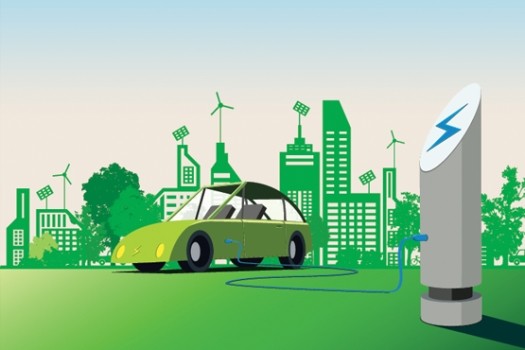The Rise of Electric Fleet Infrastructure: Building a Greener Future
Understanding the Transition to Electric Fleets
In today’s rapidly evolving landscape, fleet operators increasingly turn to electric vehicles (EVs) as a cornerstone of their operational strategy. This transition from traditional gasoline-powered vehicles is driven by the need to reduce carbon footprints and align with global sustainability goals and the remarkable operational efficiencies they offer. As battery technologies advance and become more affordable, the economic rationale for switching to electric fleets becomes increasingly compelling, presenting significant cost-saving opportunities over the lifecycle of the vehicles.
Facilitating this transition are initiatives like Blink Charging for fleets, which play a critical role in addressing one of the primary challenges fleet operators face: access to reliable and consistent charging infrastructure. Blink Charging ensures fleets can seamlessly integrate electric vehicles into their operations without disruption by providing strategic solutions that enhance convenience and uptime. This infrastructure supports growing EVs on the road and underscores the commitment to a more sustainable and efficient future.
Benefits of Electric Fleet Deployment
The shift towards electric fleets heralds a new sustainability and economic feasibility era. From an environmental perspective, EVs are a game-changer, offering a drastic reduction in greenhouse gas emissions compared to their internal combustion engine counterparts. This reduction contributes to cleaner air and healthier communities and plays a vital role in addressing the pressing challenges of climate change. The environmental benefits are clear, but the economic advantages are equally compelling. For instance, the Department of Energy notes substantial savings in fuel and maintenance costs, as EVs eliminate the need for fuels like gasoline and have far fewer moving parts, resulting in lower maintenance demands.
Adopting electric fleets also aligns companies with consumer expectations for sustainable business practices. This alignment fosters a positive corporate image, enhances brand loyalty, and opens up new markets among environmentally conscious consumers. It positions companies as leaders in sustainability, reflecting a commitment to environmental stewardship and aligning with regulatory requirements that demand lower emissions standards.
Essential Infrastructure for Electric Fleets
Developing robust infrastructure is essential to the success and efficiency of electric fleets. At the heart of this infrastructure are strategically located charging stations to minimize downtime and maximize fleet operational range. Fast-charging stations have emerged as pivotal components, reducing charging time from hours to minutes and allowing vehicles to return to service quickly. Yet, installing these charging stations requires careful planning and coordination with local utility providers to ensure the electrical grid can support the increased energy demand without disruption.
Integrating renewable energy sources, such as solar or wind, into the charging infrastructure presents a viable solution to maintaining sustainability. Such integration reduces dependence on non-renewable resources and offers cost savings through energy efficiency. Fleet managers must consider these green solutions to support environmental goals and hedge against fluctuating energy prices and potential grid instabilities.
Challenges in Fleet Electrification
The path to fleet electrification is not without its challenges. The initial investment required can be prohibitive, encompassing the cost of acquiring electric vehicles, setting up charging infrastructure, and upgrading existing electrical systems. While these costs have decreased due to technological advances and economies of scale, they remain a significant barrier for small and medium enterprises considering the transition.
Another key challenge is addressing range anxiety, a concern among operators that there might not be enough infrastructure to support long-haul routes or unexpected detours. As highlighted by experts at BBC, another hurdle is ensuring that personnel have the skills necessary to maintain and operate an electric fleet. Training and development programs are essential to equip the workforce with the technical know-how to effectively manage and troubleshoot this evolving technology.
Solutions to Enhance Charging Infrastructure
Addressing these challenges requires active collaboration between the public and private sectors. Governments can play a crucial role by offering financial incentives, such as grants and tax rebates, to offset the initial investment costs of electrification. In tandem, the private sector innovates with flexible charging solutions, such as deployable mobile charging units and solar-powered stations, providing the flexibility needed for diverse operational needs.
Streamlining the regulatory framework and simplifying installation processes are imperative to enable the rapid deployment of charging infrastructure. By fostering a collaborative and supportive environment, these measures can accelerate the adoption of electric fleets and maximize the impact of the shared infrastructure network, ultimately driving down costs and expanding access.
READ MORE : 4 Services Offered by Wealth Planners
Real-World Examples of Successful Electric Fleets
Several organizations have successfully transitioned to electric fleets, showcasing the tangible benefits of this evolution. Logistics companies, for example, are increasingly deploying electric delivery vans, capitalizing on cost savings and emissions reductions. These forward-thinking initiatives improve urban air quality and provide a competitive edge as consumers become more discerning about the environmental impact of their purchases.
Public transportation systems in major cities are also embracing electrification. Cities like London and New York are investing heavily in electric buses, which contribute to quieter and cleaner public transit systems and demonstrate a strong commitment to sustainability. These examples highlight the transformative potential of electric fleets in enhancing urban mobility and reducing transportation-related emissions.
Future Prospects of Electric Fleet Infrastructure
The future of electric fleet infrastructure is promising as technological advancements continue to drive innovation. The development of autonomous electric vehicles is on the horizon, poised to revolutionize logistics and public transportation by optimizing routes and enhancing efficiency. These technological breakthroughs will reduce operational costs, improve service reliability, and reduce human error.
Continued collaboration between industry stakeholders and governments will be crucial in overcoming existing challenges as the electric vehicle ecosystem matures. Strategic investments, policy support, and technological ingenuity will propel the development of a resilient and sustainable transportation ecosystem, fulfilling the vision of a cleaner, greener future for all.

